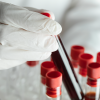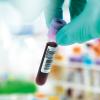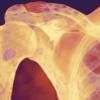After an innovative phlebotomy service was launched in Sheffield last year, Richard Wardle, Lead Laboratory Manager in Haematology, Coagulation and OPD Phlebotomy Services, gives an update on the changes and developments.
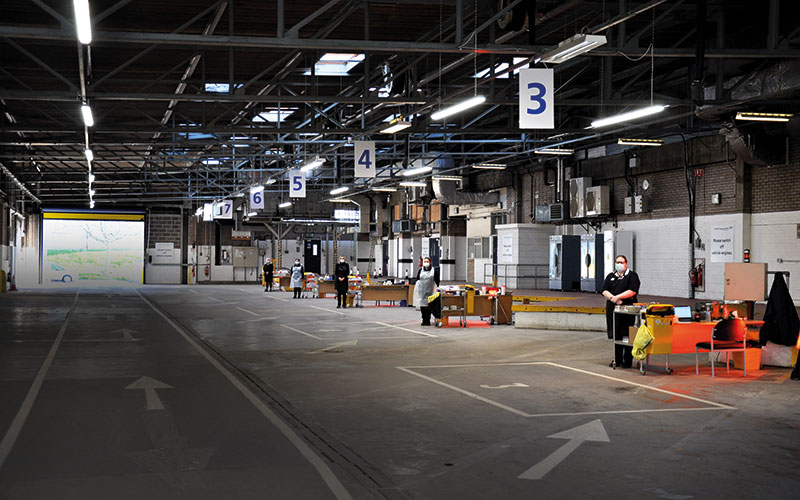
It has been over a year now since Sheffield Teaching Hospitals NHS Foundation Trust (STHFT) opened its drive-through phlebotomy service in response to COVID-19. Over this time the service has developed to meet the needs of its users. This article aims to provide an update on how things have progressed, the impact it has had, and to share the lessons learnt for anyone thinking of setting out down a similar road.
A simple process
At the beginning of the pandemic, in March 2020, with access to phlebotomy limited and patient anxiety high, Laboratory Medicine at STHFT set up a drive-through phlebotomy service. In the car park of the city’s FlyDSA Arena, a large open-sided marquee was erected and an initial five-lane model was developed. The process was simple – once on site and after a series of questions to check for COVID-19 symptoms, patients would drive (or be driven) through the structure and pull up to a phlebotomy station in the middle of the marquee. Utilising ICE order communications on 4G-enabled laptops, paperless requesting from service users reduced contact and risk of infection further. After the usual phlebotomy identification checks and location of the order in the system, the patient placed their arm through the wound-down car window and had the appropriate samples taken.
Once complete and the patient deemed safe to proceed, the car would drive through the other side and away from the site. The service was originally intended for vulnerable patients (e.g. immunosuppressed or anticoagulated); however, by the end of April, the drive-through was open to the entire city. By May, the site was seeing up to 400 vehicles per day. Due to demand for the service, the marquee was extended by a further two lanes, to seven. During this time, the service was also extended to six days per week, opening Saturday mornings and soon seeing 200 patients each weekend. In addition to blood samples being taken on-site, the service also acted as a drop-off point for other samples, such as urines or pre-operative MRSA swabs.
As winter approached and with the days becoming shorter and colder, plans were made to relocate the service. The desire was to retain the drive-through format, but place it in to a more element-friendly location. In December, having just seen its 50,000th attendee, the service moved to the city’s former Blood Transfusion Centre, close to the Northern General Hospital. In the centre’s garage, previously used to house the delivery and collection vans, seven phlebotomy bays were constructed. One-way traffic flow was enabled by large doors at either end.
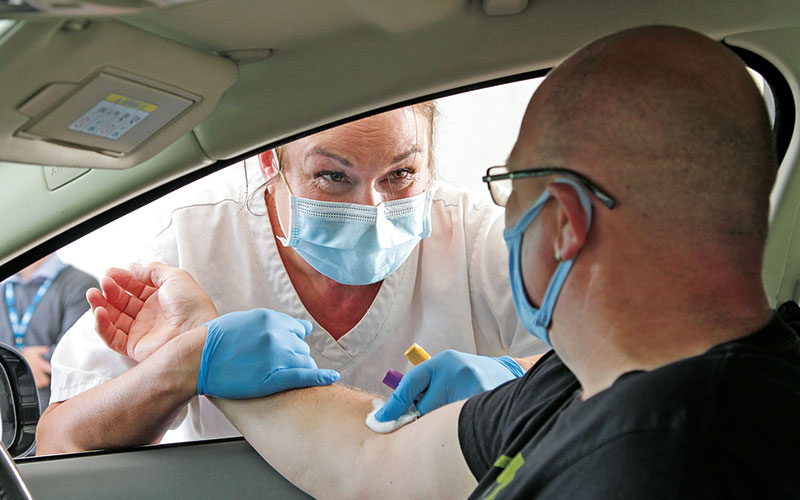
The impact the service has had for the patients and services of the city has been invaluable, and feedback collected from patients and service users alike has been overwhelmingly positive. From a survey of patients conducted in the summer of 2020, over 90% gave a positive response when asked about ease of use, safety and comfort of the service. A total of 94% of patients said they would use the drive-through again, with nearly 70% saying they would prefer to have their samples taken there in the future, rather than using traditional services. Frequent themes about the service included:
- Speed of process – much quicker than other sites. Particularly useful for patients who worked so they didn’t have to take time off work to attend
- Parking – no need to find and pay for parking on hospital site
- Mobility – no need to get out of vehicle and walk to phlebotomy unit
- Safety – no need to sit in crowded waiting rooms
- Relatives – patients were able to bring dependants with them without having to take them out of the car once on site. This was particularly useful for patients with family members suffering with dementia or mobility issues, or parents with children
- Comfortable environment – patients were in control of their own environment, as it was their own vehicle. They could control temperature, what they listened to etc. This led to many commenting on how much more relaxed they were.
Hospital clinicians and GPs also fed back on how valuable the service has been to enable continued care for their patients. As face-to-face consultations have been limited during the pandemic, the drive-through has allowed remote consultations to be performed with access to relevant laboratory results. To give one example, the trust’s renal services had (as of April 2021) in excess of 4500 phlebotomy events performed at the drive-through service, averaging approximately 20 patients per day. This means 20 vulnerable patients have been kept away from hospital sites per day. The renal team are already planning for a post-COVID world and aim to offer either face-to-face or video/phone appointments to their patients. They expect the majority to opt for the latter and are supportive of a permanent drive-through phlebotomy solution to facilitate this.
Enhance and extend
How the drive-through could be used for differing purposes remains under constant review. In addition to regular phlebotomy and sample drop-off, the site is now being utilised for blood gas analysis for certain patient groups. Respiratory services are using the drive-through to perform capillary sample collection via ear prick for MND patients, and are looking to roll this out to different patient groups. There is also a wider interest in extending the use of point-of-care testing (POCT) devices in the drive-through setting to triage patients. If by use of POCT testing a patient could be signposted appropriately upon rapid result, it is hoped this could ensure more efficient use of time and services by preventing unnecessary attendance. To enhance this and extend the capability for longer phlebotomy visits, the addition of a walk-in service to work alongside the drive-through is currently being assessed. This would also enable those who don’t have access to a vehicle to attend, whilst gaining the benefit from not attending a hospital or GP setting, if this is not required.
Learning points
Throughout the past year, interest in the drive-through has been healthy and very much welcomed. Over 30 trusts and institutions have contacted STHFT to enquire about the service. Many have wanted to hear how it works and preferably learn from our mistakes. Whilst genuinely glad to say that we haven’t made too many mistakes along the way, there are learning points:
- Site – choose a site with good access and adequate space for vehicle waiting. The site should preferably have an in/out format to enable safe and efficient traffic flow
- Team – choose your team well. Having a team on site who want to be there and contribute to the service may sound obvious but makes a huge difference. Our staff have been encouraged to own the service and with that it has developed to deliver the best possible patient experience
- Good transport logistics – one of the biggest benefits to the service is having control over the samples and receipt into the laboratory. Make it regular and direct for maximum benefit
- Appointments or not – our service chose a non-appointment system and patients attend on a first-come, first-served basis. This has its issues and we have worked hard to optimise the system, introducing more lanes and extending our working week to accommodate demand. An appointment system may negate the need for some of this, but may also reduce flexibility and patient choice
- Signage and communications – ensure that patients have good instructions prior to attending site so they know what to expect, including opening times and location. Have good signage on site and encourage staff to communicate with patients at all opportunities to allay fears and reduce anxieties.
What does the future hold for drive-through phlebotomy in Sheffield? It is clear the service has been a success in a period of unprecedented need. We believe it has been demonstrated that drive-through phlebotomy works and has many benefits that could continue to be realised post-COVID.
Leaving the final word with one patient (and the patient knows best): “Really efficient. Less time taken. Phlebotomist put me at ease and was great. This service should stay after COVID.”
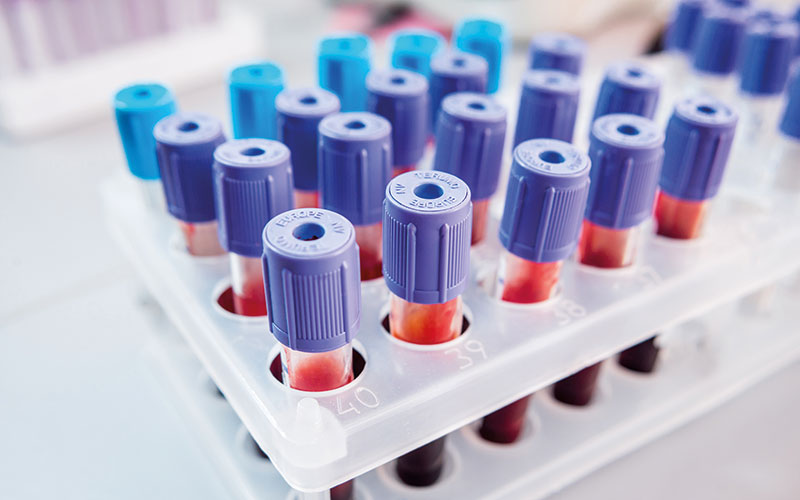
The laboratory has also seen benefits.
Turnaround time – with samples being collected every hour and delivered directly to the laboratory, formerly by the Whiteknights Yorkshire Blood Bikes charity and now by trust transport, there is little delay from obtaining the sample to it being processed. Vein to result within two hours from the drive-through is 89.6%, as opposed to data from 2019 of GP and OPD phlebotomy services, which were 17.3% and 72.2%, respectively
Communication – results are back with users sooner, facilitating better communication of urgent or abnormal results
Quality – the limited time delay from phlebotomy to laboratory, particularly as samples are obtained by competent staff who are part of the laboratory medicine team
Optimisation – staff and analyser time is optimised, due to a steady flow of work throughout the day. This also enables the reduced staff group later in the day to concentrate on the urgent, non-routine samples generated out of hours through the A&E department and other urgent services
Accuracy – increased use of order communications has streamlined request entry, which has less inherent risk than manual entry.
Image credit | Shutterstock


